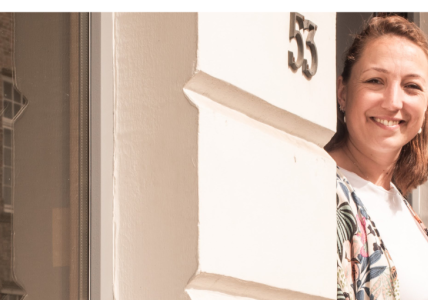How can society keep up with increasing needs for healthcare? SHINE found the key may be smart business cases creating wins for companies and the public health sector.
In the project SHINE, eight partners in South Holland, Scotland, and West Flanders addressed a common challenge:
Populations are ageing in the North Sea Region, and therefore demands for healthcare are on the rise. It will be a challenge to keep good health services affordable in the future.
In response to this situation, SHINE developed new integrated business models. As a core part of the set-up, health organisations team up with enterprises and scientists to develop new solutions. Another key aspect of the approach is that it puts the needs of the end users first.
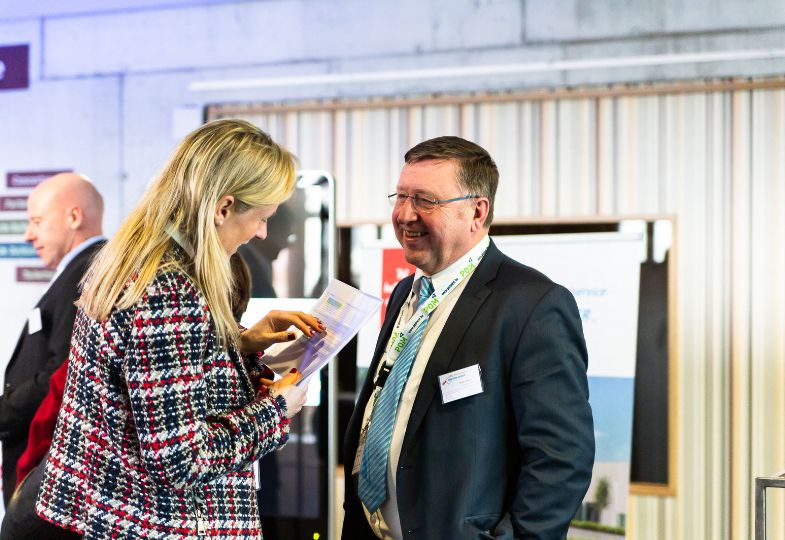
SHINE brought business and healthcare professionals together in new partnerships. Photo: SHINE.
Healthcare business models take off
For example, the business model “Nutrition, People and Care” aims to provide healthy nutrition for chronic patients. The solution involves raising awareness and providing meals tailored to the individual. Based on this idea, a new partnership took shape between a hospital, a patient organisation, two care organisations, two food companies, and an IT company.
Working together with care organisations as a profit player is a major challenge and requires a mindshift. Profit players must be able to share profit and social players must learn to think in terms of profitability.
To help partnerships, we developed an e-tool guiding organisations to set up integrated business models with shared value. The tool takes users through the process step by step, from defining shared value to scaling up the business. SHINE consulted the tool in 89 countries in Europe and beyond. Over 5,000 people from 136 countries have so far explored the system.
Until now, 36 new partnerships have adopted the SHINE approach. These include 11 in West Flanders, 9 in South Holland, and 16 in Scotland.
From these, 11 joint ventures have matured into spin-offs aiming to bring the developed solutions to the market.
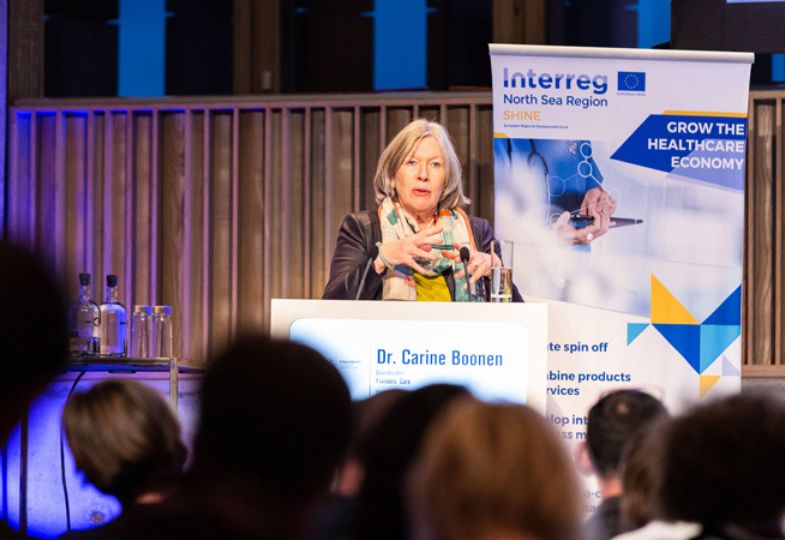
Photo: SHINE
Innovation for inclusion
One invention developed through SHINE enables people with a disability to work in convenience stores or supermarkets.
Mariënstede, a centre for people with a disability, sells products in their own neighbourhood store. However, most of the centre‘s users cannot handle a traditional cash register because they have problems reading, counting, or weighing. That is why the care home went looking for a system adapted to the skillsets of people with a disability.
And it was a new business partnership that helped fulfil their wish. A collaboration with a school (De Hoge Kouter) and a manufacturer (Summit retail) led to a unique cash register that works with thumb recognition, a scanner, and automatic handling of change.
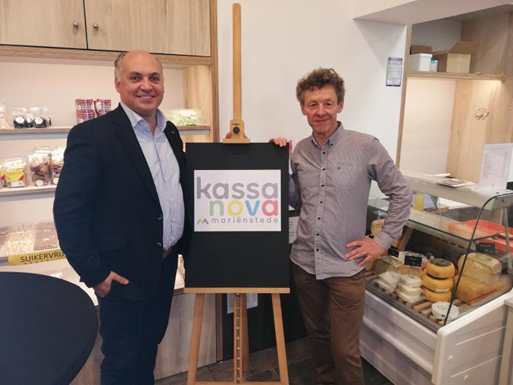
The high-tech “Kassa Nova” was presented on 7 November 2019. This novel cash register enables people with a disability to work as check-out assistants in stores and supermarkets. Photo: SHINE
The “Kassa Nova” is now in use at the local store, but the partners’ plans go further. The new device is suitable for local shops, supermarkets, catering, or shops in care organisations. So the partners have launched the product on the market and divided roles between them: While Mariënstede markets the product, Summit retail handles delivery and service.
Collaboration changes mindsets
One of the project’s key results is a mindshift. Because these types of partnerships are novel, the partners first need to build mutual trust and respect to succeed. Also, convincing the partners to strive for both economic and social added value turned out to be a challenge.

When different sectors work together, each partner needs to trust and respect each other’s expertise. The reward is a better, more viable solution. Photo: SHINE.
It certainly does take extra time to create trust between the partners and ensure they understand the value proposition in the same way. Still, we are convinced that the final business model will be more sustainable because it is driven by demand. Doubtlessly, this will translate into economic benefits while also generating social added value.
More and more healthcare organisations […] realise that by working together with companies, they can make a positive contribution to the people they work for.
We shared our approach through a series of events such as conferences, mini trade shows and a symposium in Brussels. Due to these efforts, the SHINE method is spreading further.
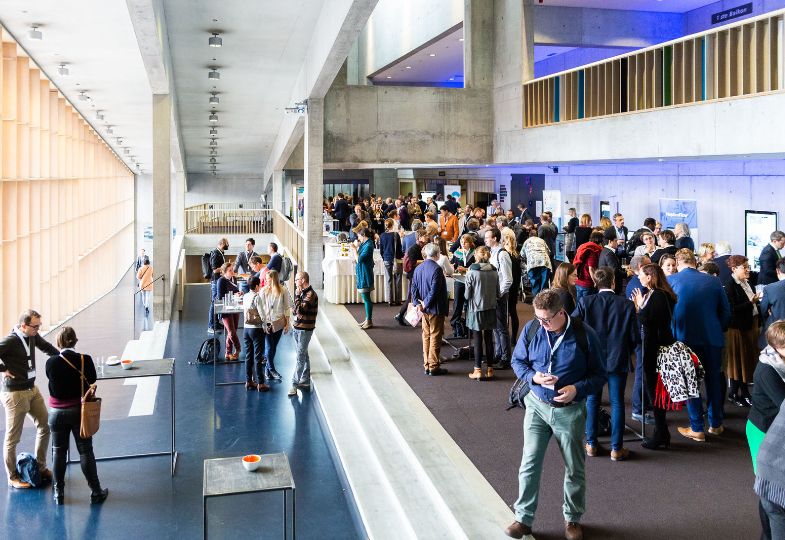
Image by Pulsar Photographie
Mainstreaming a new healthcare ecosystem
New health innovation programmes in the Scottish, Dutch, and West-Flemish regions are adopting the SHINE method. In total, the project partners have launched 13 initiatives, including new integrated business models and frameworks to support this type of innovation.
Also, 8 new value-driven innovation cases in two EU-funded projects are using the SHINE approach.
Meanwhile, the European Commission has designated the SHINE lead partner, POM West Flanders, the status of 3-star Reference Site for supporting healthy ageing. This is thanks to our efforts made in SHINE.
In conclusion, SHINE’s concept can help finance European healthcare in the future. This is why POM West-Flanders aims to further embed the new method in the healthcare economy.
Top 3 project highlights
Popular e-tool
Step by step, the project’s e-tool guides partners to set up business models.
Changing mindsets
SHINE brought different sectors together to develop joint business ventures.
Going mainstream
Today, SHINE’s method is used in 36 partnerships, 13 regional innovation initiatives and 8 new cases in EU-funded projects.
Learn more about integrated business models
From business concept to market launch, SHINE’s e-tool has you covered.
Learn more about SHINE
You are welcome to contact the lead partner, POM West Flanders:
Inge Taillieu, mobile +32 479 07 08, email inge.taillieu@pomwvl.be
Dominique Bogaert, mobile +32 472 08 95 35, email dominique.bogaert@pomwvl.be
To explore SHINE’s work and see all the outputs and results, you may also want to browse the project’s website.
About the author
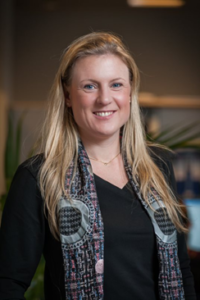
Inge Taillieu is Coordinator of Healthcare Economy at POM West Flanders. Her special interest is in new types of joint business models set up between companies and healthcare organisations.
She is currently setting up models of cooperation to add value to the end user, working with a wide range of experts and companies.
